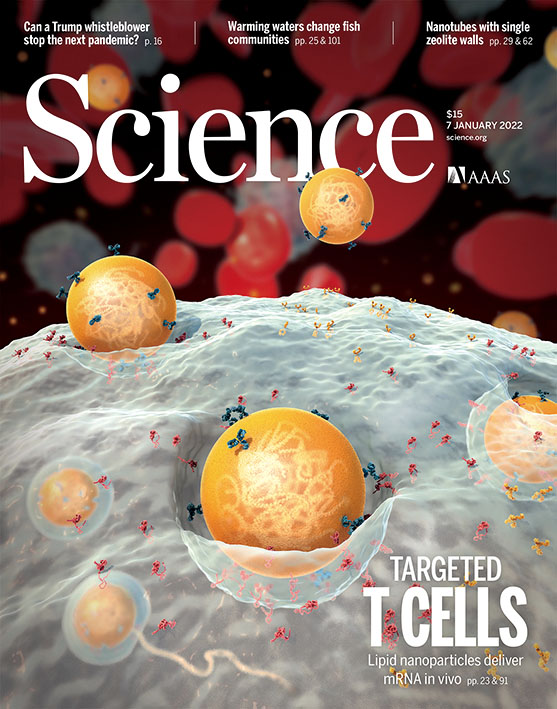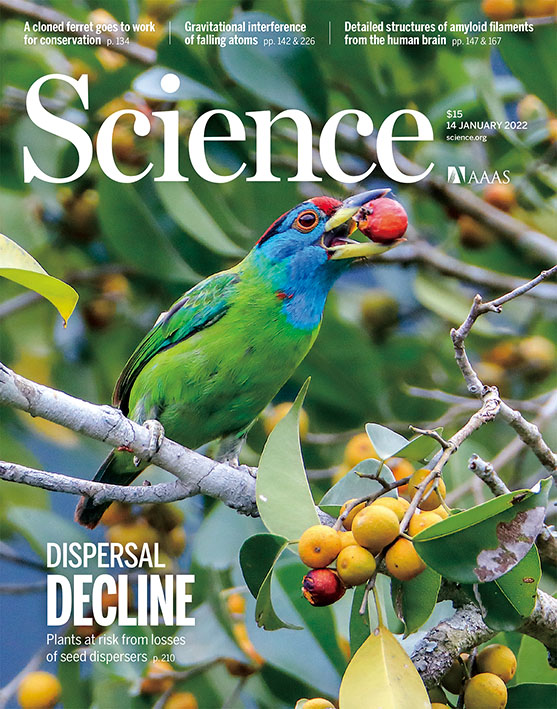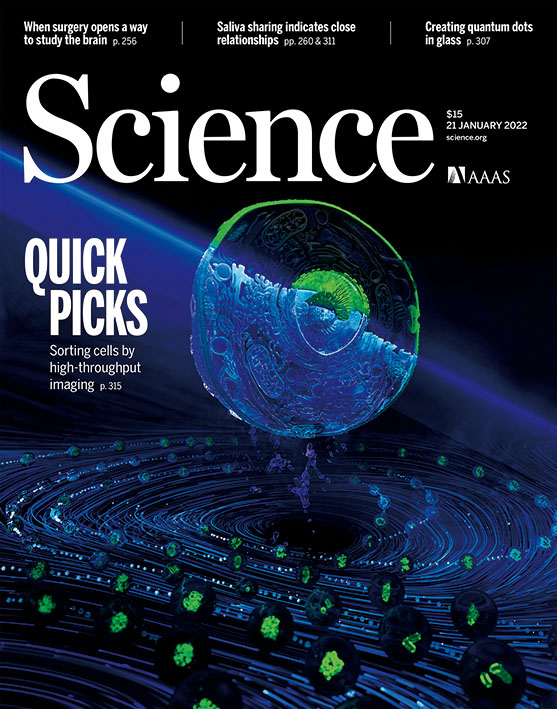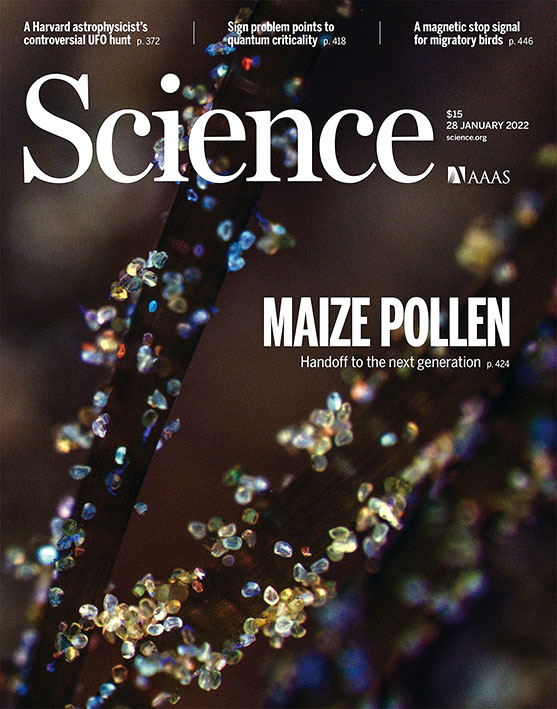[点击科学]2022年2月点击科学
2022-02/总第311期

2022-01-07
封面图展示的是在血液和组织中,脂质纳米颗粒(图中的球体)正在使用抗体以特异性地靶向T细胞对抗CD5蛋白(图中蓝色部分为抗体;红色部分为CD5)。这些纳米颗粒将mRNA传递给T细胞,在体内对其重新编程,使其瞬间表达靶向致病性心脏成纤维细胞的嵌合抗原受体(金色部分)。在小鼠模型试验中,经过活体工程的T细胞可以缓解其心脏纤维化并改善心脏功能。
Lipid nanoparticles (spheres) use antibodies against the CD5 protein (antibodies, blue; CD5, red) to specifically target T cells while inside the bloodstream and tissues. The nanoparticles deliver mRNA to T cells, reprogramming them in vivo to transiently express chimeric antigen receptors (gold) that target pathogenic cardiac fibroblasts. In vivo-engineered T cells mitigate cardiac fibrosis and improve heart function in a mouse model.

2022-01-14
封面展示的是生活在不丹南部的一只蓝喉巨嘴鸟正在吃无花果,并且会把种子撒在这里。传播种子的动物会将植物的种子转移到合适的栖息地,从而帮助肉果植物适应气候变化。然而,许多这种动物正在经历衰退、濒危或灭绝的威胁。鸟类和哺乳动物数量的减少导致种子传播减少了约60%,因此限制了植物跟踪气候变化的能力。
A blue-throated barbet (Psilopogon asiaticus) eats a fig in southern Bhutan, dispersing the seeds within. Seed-dispersing animals help fleshy-fruited plants adapt to climate change by moving seeds to suitable habitats. However, many seed dispersers are in decline, endangered, or extinct. Bird and mammal population losses have caused an estimated 60% decline in seed dispersal, limiting plants’ ability to track climate change.

2022-01-21
封面图展示的是一个表达荧光标记蛋白(绿色)的靶细胞被蓝色激光照亮,并从旋涡状的细胞池中被选出。新的细胞分选技术将流式细胞术的吞吐量和定量能力与多色荧光显微镜的空间分辨率相结合,能够以高达每秒15 000个细胞的速度分离具有复杂表型的细胞。
A target cell expressing a fluorescently tagged protein (green) is illuminated by a blue laser and selected from a swirling pool of cells. New cell sorting technology combines the throughput and quantitative power of flow cytometry with the spatial resolution of multicolor fluorescence microscopy to enable isolation of cells with complex phenotypes at speeds up to 15,000 cells per second.

2022-01-28
封面图展示的是在玉米丝(长链)上花粉(明亮的物体)的荧光显微镜图像。花粉是高等植物的单倍体世代,夹在二倍体世代之间。每个花粉粒都是一个多细胞生物,具有不同的细胞类型和活跃的基因表达。新的RNA测序结果确定了这一代的“成年期”,并在这个时候开始其独立的基因表达程序。
Fluorescence microscopy image of pollen (bright objects) on maize silks (long strands). Pollen is the haploid generation of higher plants that is sandwiched between diploid generations. Each pollen grain is a multicellular organism with distinct cell types and active gene expression. New RNA sequencing results identify when this generation “comes of age” and begins its independent gene expression program.






